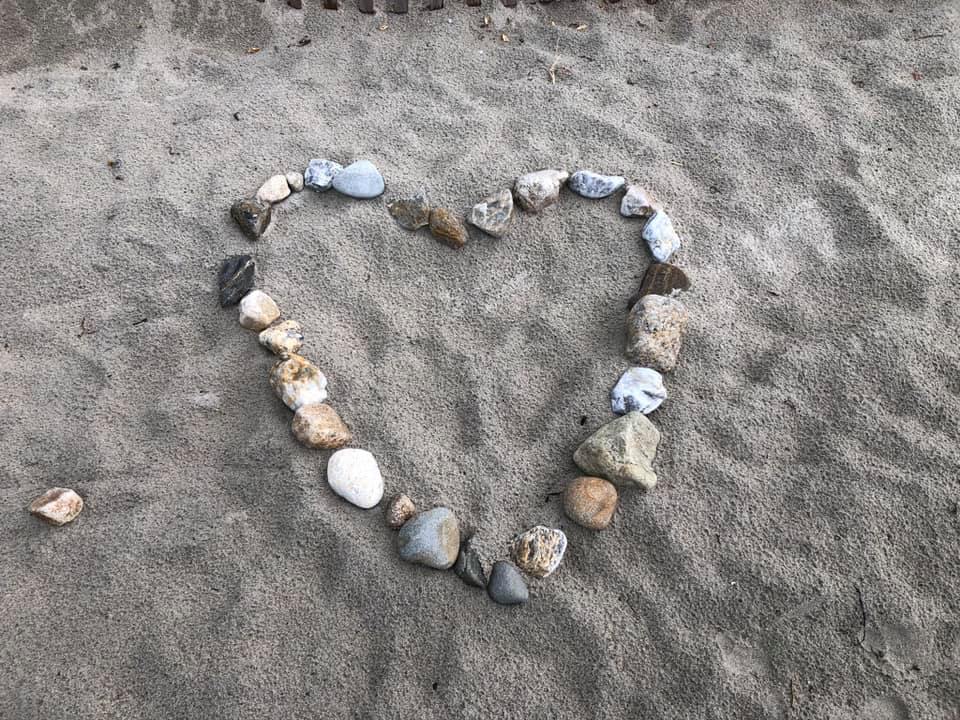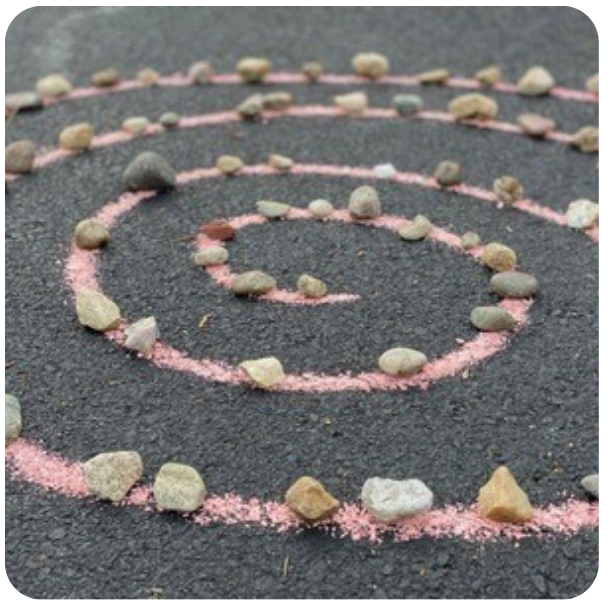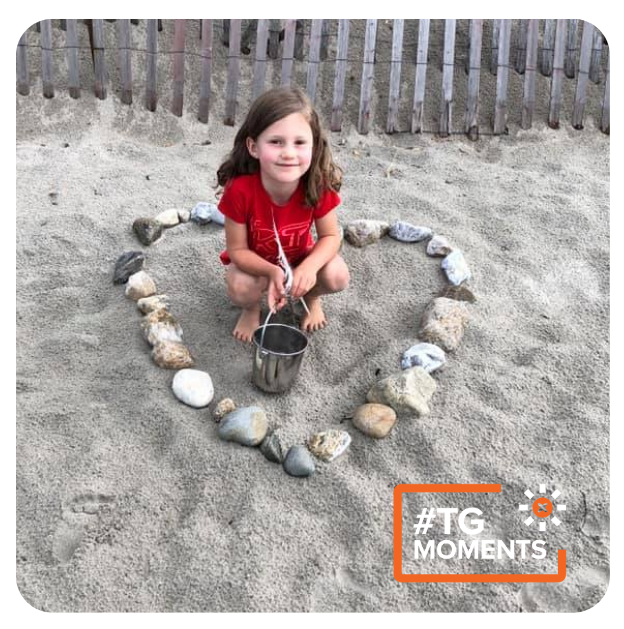We originally wrote this for Valentine’s Day, but shapes are everywhere—and they bring us joy 365 days a year! That makes every day a good time to use a super simple but brilliant strategy to help calm, focus and teach kids about the world—shape making. It’s as simple as helping kids to make familiar shapes using whatever you’ve got on hand.
Why Make Shapes?
Years ago, I spoke at the same early learning conference as Joan Almon, co-founder of the Alliance for Childhood and though she was a font of wisdom, one tidbit from her keynote really stuck in my mind. When Joan was a preschool teacher, she would regularly take a set of stones and slowly start to arrange them in a circle. Like magic, even her most squirrelly students would grow captivated and settle in as her circle slowly came into form.
This strategy has saved me more times than I can count. I’ve quietly corralled explorers in Tinkergarten class with a circle of acorns, and I’ve saved a few dinners out by arranging the sugar packets on a restaurant table until the food arrived.
Even better, I’ve taught my kids and my students to build their own shapes out of objects, too. As a result, I’ve watched kiddos log hours and hours of meditative, focused shape-making play.
How It Works
Learning their shapes is widely accepted as something young kids ought to do. And, recognizing and naming shapes is super helpful for future learning, not only about geometry or design but about how we use symbols to read, write and communicate.
Familiar shapes also catch our eye, hold our attention and can even inspire an emotional response. They are sprinkled throughout the natural world, and when you spot the triangles that form in an ice puddle or the hexagons of a bee hive, something fires in your brain, and you’re hooked. Shapes are more than something to know about—they are a tool for helping kids learn to direct and hold their focus—one of the most important skills kids will need to learn anything.
Arranging objects into lines and shapes is also a special type of behavior that young kids all over the world engage in when they play. Supporting these behaviors helps kids play longer and with greater focus. When repeated, they even help prepare kids for different ways of thinking later on.
How Do You Invite Kids Into Shape-Making Play?
Remember, you always get more genuine and lasting play from kids when you invite them into it. One fun way to keep kids always ready to make shapes is to keep an eye out for shapes in nature. We call it shape-hunting, and it can make a hike or any walk outdoors extra fun. Shapes are out there, and it’s pretty joyful business to find them.
To get kids making shapes of their own, first, gather a bunch of “nature treasures”—objects you can gather from around your yard or park like stones, twigs, leaves, wood chips or tree fruits (like acorns or pine cones).
Then, welcome kids to dive in and lead their own play. Here are a few ways:
Model and make it together: Do what Joan did: Slowly start to form a shape without saying a word. Notice how curious your child becomes when you are so very focused. Engage your child if they want to talk or just keep making. Once they are interested and your shape is taking form, hand them an object to add and enjoy making the rest of the shape and other shapes together.
Encourage easier shapes first: Circles or ovals are the easiest shapes for kids to make, so start with those. Squares and rectangles are a bit more challenging, but can happen if you are using linear objects like sticks.
Outline and model: Lay down a piece of string or use sidewalk chalk to form the outline of a shape. Or, just draw a line in the dirt, sand or snow with a stick or your finger. Then, kids can follow your outline as they place objects. This is especially helpful when making shapes like spirals or Valentine’s hearts—shapes kids really love but that are pretty hard for littles to make on their own.
Make giant shapes of all sizes: If you have sidewalk chalk or rope, make giant shapes that kids can not only build with objects but can interact with, move in and out of or use to spark pretend play.
Make shapes indoors: If you aren’t able to be outdoors for a bit, gather up nature treasures and bring the shape-making indoors. Just interacting with natural objects helps kids stay connected to nature, even when the play has to move inside.
Share your shapes!
Share photos of whatever love shapes you and your kids create using @tinkergarten and #TGmoments. We can’t wait to see the love and joy this community generates!





